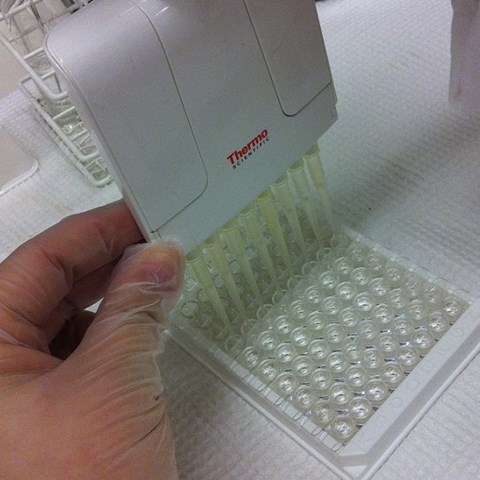Contact
Bodil Ström Holst
Senior Lecturer at the Department of Clinical Sciences; Division of Reproduction
Telephone: 018-671608
E-mail: bodil.strom-holst@slu.se

Benign prostatic hyperplasia (BPH) is an age-related disorder in the intact male dog that is associated with an increase in the prostatic size. Ultrasonography gives a reliable estimate of the prostatic size, but a method for screening the prostate size using a serum sample has advantages, such as requiring less expensive equipment.
The primary aim of the study was to study the association between the concentration of the circulating biomarker canine prostate specific esterase (CPSE) and prostatic size.
Seventy-nine dogs that were four years old or older were included in the study. Ultrasonography was used for calculating the volume of the prostate. The calculated volume was divided by an estimate of the normal prostatic volume in dogs aged one to four years, to determine the relative prostatic size: the size of the prostate in relation to the normal size in dogs 1–4 years old (Srel). CPSE was analyzed from serum samples. Multiple linear regression analysis was used for studying associations between variables. Prediction intervals for the relative prostatic size based on CPSE concentrations were calculated, as were receiver operating curves for CPSE concentrations predicting Srel.
The concentration of CPSE was associated with the relative size and contour of the prostate (P < 0.001). All dogs with clinical signs of BPH had an Srel ≥ 2.5. A CPSE concentration of 200 ng/mL predicted Srel to 2.5 (95% P.I: 1.2–4.8). Based on ROC analysis, the optimal discrimination threshold for CPSE concentration for Srel ≥ 2.5 was estimated as 90 ng/mL (95% confidence interval: 50–140), with a sensitivity of 85% and a specificity of 72%.
Screening for CPSE is of potential value in the aging intact male dogs. Although many dogs with an Srel ≥ 2.5 show no clinical signs, the insidious nature of BPH supports further investigations of the prostate in these dogs, corresponding to a CPSE concentration of approximately 90 ng/mL or higher.
http://doi.org/10.1016/j.theriogenology.2017.01.032
B.S. Holst, E. Holmroos, L. Friling, S. Hanås, L.-M. Langborgd, M.A. Franko, K. Hansson. The association between the serum concentration of canine prostate specific esterase (CPSE) and the size of the canine prostate. Theriogenology. Volume 93, 2017, Pages 33–39.
Bodil Ström Holst
Senior Lecturer at the Department of Clinical Sciences; Division of Reproduction
Telephone: 018-671608
E-mail: bodil.strom-holst@slu.se